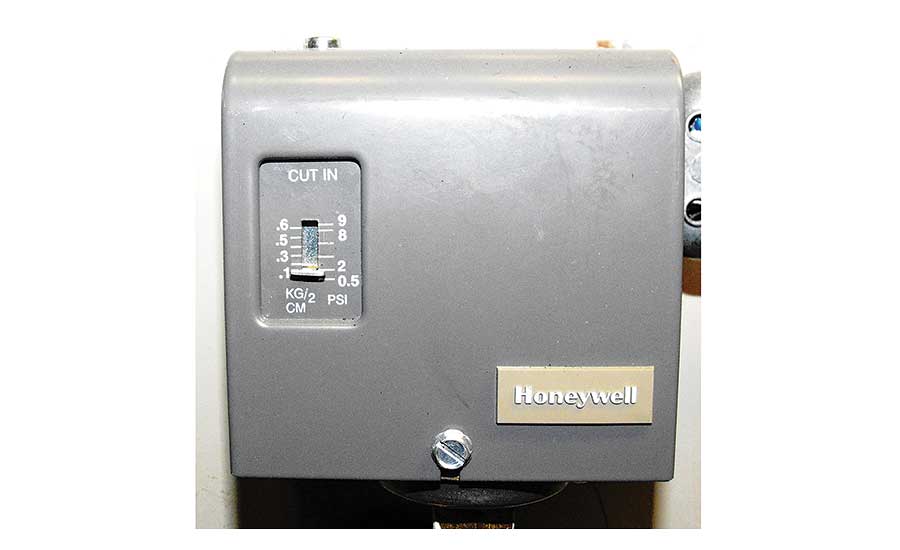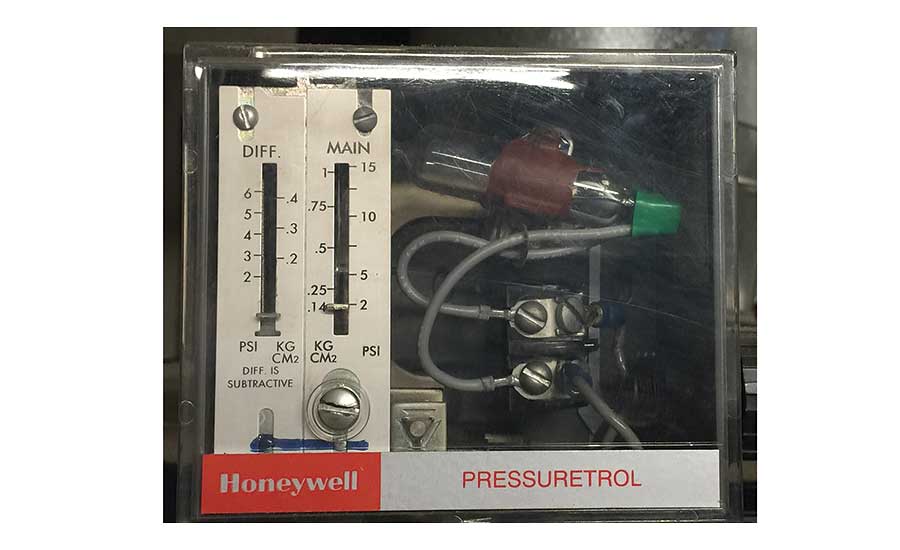Ray Wohlfarth: Understanding boiler controls

Pictured is an additive-style pressure control for a low-pressure steam boiler. Photo credit: Ray Wohlfarth

Both the operating and limit control for a hydronic boiler are present in this photo. Photo credit: Ray Wohlfarth

A hydronic manual reset, pictured here, is manual reset limit control for a hydronic boiler. Photo credit: Ray Wohlfarth

A subtractive-style pressure control for a low pressure steam boiler is shown above. Photo credit: Ray Wohlfarth




My cell phone buzzed and the excited caller said: “That new boiler you sold us is not working. Can you send someone over right away? We have no heat.”
I agreed and drove to the building. Once there, the building manager led me to the boiler room. The hydronic boiler, thought to be new, was 3.5 years old. Mounted on the front of the boiler were three similar- looking controls all set for the same temperature: 160° F.
The manager shrugged when I asked who changed the control settings. After tracing the wiring and adjusting the controls for the proper temperature, I wrote with a marker the correct temperature under each control. I used to write the settings on the control covers, but I found people sometimes will switch the covers.
Once set correctly, the boiler operated properly and the building had heat.
Commercial boiler controls
Commercial boilers typically have two or three controls: operating, limit, and sometimes a firing-rate control.
Operating control. This device is the principal boiler control and is set at the desired operating pressure or temperature of the boiler. The hydronic boiler operating control is typically set to 180°. On low-pressure steam systems, this is usually set for around 2 psig. This control is an automatic reset control, which means it cycles the burner on and off when there is a call for heat.
Limit control. This is set higher than the operating control and is usually a manual reset control. That means that if the boiler reaches the set point of the control, the power to the burner is interrupted and will not operate until the temperature or pressure inside the boiler drops below the control set point and a manual reset button is pushed.
The reason for a manual reset is to alert you the operating control did not shut off the boiler at its set point. For hydronic boilers, I like to set the limit control for 20° to 30° higher than the operating control, 200° to 210°. If the set point is too close to the operating control set point, the boiler could over-shoot the operating control and shut off on the reset control. This would result in a no-heat call.
On low-pressure steam systems for comfort heat, I set the control for 10 psig. This gives a 5 psig cushion between the setting and the boiler relief valve opening pressure, 15 psig. If the boiler is used for process applications such as brewers or distillers, it will be set higher.
Suppose we have the operating control for a steam boiler set for 2 psig and the limit control set for 10 psig. If the upper manual reset limit trips, I would watch the steam pressure of the boiler while it is firing. If the boiler pressure reaches the set point of the manual reset control (10 psig), the operating control is most likely defective.
Firing-rate control. The firing-rate control is used with a variable-input boiler such as a low-high-low or modulating burner. The set point for this control should be slightly lower than the set point for the operating control. This control will reduce the firing rate of the burner once it reaches the set point of the firing rate control.
For example, I would set the firing rate control for 175° for a hydronic boiler. Once the boiler water temperature reaches 175°, the burner will drop to low-fire. The burner will stay at low-fire until the water temperature rises to the set point of the operating control (180°) and shuts off or the water temperature drops below the set point of the firing rate control when it will increase the firing rate of the burner.
Low-pressure steam systems
Low-pressure steam systems for comfort heat are a little trickier to set, as the pressures are so low and the span is narrow.
If I am trying to maintain a 2 psig boiler pressure, I will set the firing-rate or modulating control for 2 psig with a 1 psig differential and the operating control for slightly higher (4 psig). The firing-rate control will drive the burner to low-fire position at 2 psig and will stay at low fire until the boiler pressure reaches 4 psig, where the operating control will shut off the burner or increase the boiler firing rate if the steam pressure drops 1 psig lower.
Differential. This is the difference between when the boiler starts and when it stops. Typically, the differential is 10°-20° for a hydronic boiler. The wider the differential, the longer the boiler operates and increases the seasonal efficiency. Too wide of a differential may cause wide temperature swings in the space and create comfort complaints. The differential on a steam system will vary depending on what the steam is used for.
Subtractive or additive. Boiler controls are available in either subtractive or additive styles. Let us assume we have a low-pressure steam boiler set at 5 psig with a 3 psig differential. If the control is a subtractive one, the boiler will shut off at 5 psig and restart once the pressures drops 3 psig or at 2 psig.
Most hydronic controls are subtractive. If you have the control set at 180° with a 10° differential, the boiler will shut off or cut out at 180° and will restart or cut in once the temperature drops 10° to 170°.
The additive control operates a little differently. The set point is the cut-in, or starting point, of the boiler. The cut-out, or boiler stopping point, is the set point plus the differential. If we have the same steam system with the set point at 5 psig with a 3 psig differential, the boiler will start once the pressure drops to 5 psig and stop when it reaches 3 psig higher, or 8 psig.
Stay safe in the boiler room.
Looking for a reprint of this article?
From high-res PDFs to custom plaques, order your copy today!












